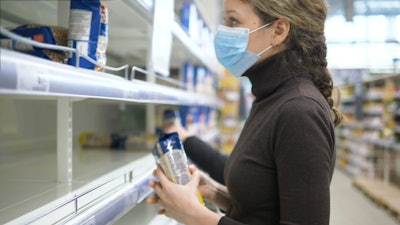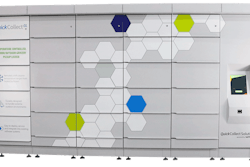
When the Coronavirus disease (COVID-19) hit, consumers flocked to grocery stores to stockpile, leaving many shelves completely barren. To date, COVID-19 cases are spiking, with shoppers once again out buying in panic mode. But, when shopper behavior wasn’t so erratic, how did consumer grocery shopping behaviors change from pre-pandemic days?
Trips to the store are now more purposeful and planned
According to Sense360 data, 45% more people are making lists and planning out more purposeful, multi-stop trips in an attempt to be more efficient. Fewer trips out with better planning means less contact with potentially ill people. This change is due to people wanting to accomplish as much as they can in a single trip, so that they don’t have to start the self-quarantine process several times per week. Keeping store visits short and on task (30 minutes or less) is key to lowering risk of contracting COVID-19, according to airborne disease experts.
Impulse buying still happens, but shoppers want to be in and out quickly
Shoppers are cautious of idly browsing down aisles like they used to pre-pandemic. In fact, only 68% of shoppers walk a few aisles. Yet while there is minimal time for browsing due to wanting to be in and out as quickly as possible, 61% of consumers still manage to purchase at least one item on impulse. Frozen prepared foods and frozen pizza are among the highest rate of impulse shopping. This is not surprising considering these items replace products typically sourced and enjoyed out of the home, in restaurants and retail locations.
Time of day shopping has shifted
Traditional Friday and Saturday early morning and evening shopping norms have taken a backseat to Sunday and Monday, consisting of mid-day trips between 11 a.m. to 2 p.m. What used to be a jaunt to the grocery store at 5 p.m. after work on a Friday has also shifted. With a larger percentage of the population working from home, there is greater flexibility to leave a desk or home office for shorter periods of time in order to stock up vs. being in an office setting and having no time to leave or a place to store groceries during the day.
Product availability determines which retailers get the business
It’s no surprise that in-stock availability of key items is leading shoppers to travel farther than they did pre-COVID-19. One of the biggest drivers of which retailer shoppers will patron is whether or not that retailer has certain items in stock, including regular pantry staples (milk and eggs). In March 2020, consumers experienced shelves completely empty due to panic buying. Shoppers are unlikely to return to stores they think will consistently be out of the goods they normally shop for and expect to see on shelves.
Shoppers turn to online ordering and curbside pickup
Many consumers are shopping online for the first time in their lives. To handle the surge of online orders, largely curbside pickups, stores have adjusted their layouts including turning parking areas into tented pickup stations or curbs with signs directing customers to their pickup spot. New technologies are being put into place to ensure seamless customer experience, including the use of two-way mobile messaging between grocers and customers to share pickup instructions and ease the process. Grocers are capturing customer feedback on whether or not the online shopping experience was satisfactory, so that they can adjust their online storefronts to mimic what customers want and need in their online experiences.
While all of these statistics and data are important, it’s even more important to understand that brands are using this type of data to understand how they need to adjust and pivot to meet changing customer demands. One of the ways brands are determining their innovation strategy is by connecting with customers and capturing their feedback. What is it that they want and need from their grocery outlets in the new environment? What will make them feel safe? What promotions and pre-shopping marketing will resonate and drive them to the stores? These questions are answered by the experience and engagement voice of customer technology. As consumers continue to adapt through shutdowns and re-openings, grocery and food brands are tapping data to understand where to head next to keep customers loyal and safe.




















